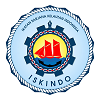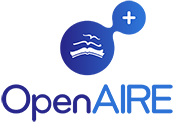DIFFERENCES OF CORAL REEF AND CORAL COMMUNITY FISH ABUNDANCE CONDITION BASED ON ZONING OF BENGKOANG ISLAND, KARIMUNJAWA
Abstract
Bengkoang Island is an unpopulated island in the northern region of the archipelago. The island is divided into 2 zones, Marine Protection Zone and Marine Tourism Utilization Zone, based on the zoning and management plan of the Karimunjawa National Park, Central Java. This research is aimed to observe the condition of the coral reef and coral community fish abundance in Bengkoang Island based on the zoning. There were 2 stations to represent each of the zones at depths of 5 and 10 meters. Line Intercept Transect (LIT) method was used along 100 meters to data the reef substrate and Visual Census method with Belt Transect was used to data the coral community fish. The result showed that the coral cover was the highest in Station 1 at 5 m which was located in the Marine Protection Zone with 80,31%, while the lowest was found in Station 2 at 10 m which was located in the Marine Tourism Utilization Zone with 18,81%. Meanwhile, the coral community fish abudance was the highest in Station 1 at 10 m with 15.600 individual/ha and lowest in Station 2 at 10 m with 4.280 individual/ha. Based on the result, it can be said that the condition of the coral reef ecosystem in Bengkoang Island varies with a high margin between the data stations. The result indicated that the coral reef ecosystem in the Marine Protection Zone was in a better condition than in the Marine Toursim Utilization Zone.
DIFFERENCES OF CORAL REEF AND CORAL COMMUNITY FISH ABUNDANCE CONDITION BASED ON ZONING OF BENGKOANG ISLAND, KARIMUNJAWA
ABSTRACT
Bengkoang Island is an unpopulated island in the northern region of the archipelago. The island is divided into 2 zones, Marine Protection Zone and Marine Tourism Utilization Zone, based on the zoning and management plan of the Karimunjawa National Park, Central Java. This research is aimed to observe the condition of the coral reef and coral community fish abundance in Bengkoang Island based on the zoning. There were 2 stations to represent each of the zones at depths of 5 and 10 meters. Line Intercept Transect (LIT) method was used along 100 meters to data the reef substrate and Visual Census method with Belt Transect was used to data the coral community fish. The result showed that the coral cover was the highest in Station 1 at 5 m which was located in the Marine Protection Zone with 80,31%, while the lowest was found in Station 2 at 10 m which was located in the Marine Tourism Utilization Zone with 18,81%. Meanwhile, the coral community fish abudance was the highest in Station 1 at 10 m with 15.600 individual/ha and lowest in Station 2 at 10 m with 4.280 individual/ha. Based on the result, it can be said that the condition of the coral reef ecosystem in Bengkoang Island varies with a high margin between the data stations. The result indicated that the coral reef ecosystem in the Marine Protection Zone was in a better condition than in the Marine Toursim Utilization Zone.
Key Words: Karimunjawa, Bengkoang Island, Zoning, Coral Reef, Coral Fish
Full Text:
PDFReferences
Bell, J. D., & Galzin, R. (1984). Influence of live coral cover on coral-reef fish communities. Marine Ecology Progress Series. 15(3), 265-274.
BTNKJ. (2004). Penataan Zonasi Taman Nasional Karimunjawa, Kabupaten Jepara, Provinsi Jawa Tengah, Balai Taman Nasional Karimmunjawa, Semarang, Indonesia
Burges, W.E. (1978). Butterflyfishes of the World: A Monograph of the Family Chaetodontidae. T.F.H. Publications, Neptune City, New Jersey
English, S.; C. Wilkinson and V. Barker. (1994). Survey Manual For Tropical Marine Resources, Australian Institute of Marine Science. Townville-Australia
Ghiffar, M. A., Irham, A., Harahap, S. A., Kurniawaty, N., & Astuty, S. (2017). Hubungan Kondisi Terumbu Karang dengan Kelimpahan Ikan Karang Target di Perairan Pulau Tinabo Besar, Taman Nasional Taka Bonerate, Sulawesi Selatan. Jurnal Ilmu Kelautan SPERMONDE. 3(2).
Haruddin, A., Purwanto, E., Budiastuti, M. S., & Si, M. (2011). Dampak Kerusakan Ekosistem Terumbu Karang Terhadap Hasil Penangkapan Ikan Oleh Nelayan Secara Tradisional Di Pulau Siompu Kabupaten Buton Propinsi Sulawesi Tenggara. Jurnal EKOSAINS, 3(3), 29–41.
Hasibuan, H. ., Sitorus, H., & Lesmana, I. (2011). Studi Tutupan Karang di Desa Sitardas Kecamatan Badiri Kabupaten Tapanuli Tengah Provinsi Sumatera Utara.
Juhasz, A., Ho, E., Bender, E., & Fong, P. (2010). Does use of tropical beaches by tourists and island residents result in damage to fringing coral reefs? A case study in Moorea French Polynesia. Marine pollution bulletin, 60(12), 2251-2256.
Kementerian Kehutanan. (2012). Keputusan Direktur Jendral Perlindungan Hutan dan Konservasi Alam Tentang Zonasi Taman Nasional Karimunjawa. Kementerian Kehutanan. Maret 2012. Jakarta
Levinton, J.S. (1982). Marine Ecology. Prentice-Hall Inc. Englewood Cliffs
Malik, M. D. A. (2016). Tutupan Terumbu Karang dan Kelimpahan Ikan Terumbu di Pulau Nyamuk, Karimunjawa. Prosiding Seminar Nasional Tahunan ke-V Hasil-Hasil Penelitian Perikanan dan Kelautan: 647 - 657
Mujiyanto. (2012). Hubungan Terumbu Karang dan Ikan Karang di Perairan Pulau Semak Daun, Kepulauan Seribu.
Nggajo, R., Wardiatno, Y., & Zamani, N. P. (2009). Keterkaitan Sumberdaya Ikan Ekor Kuning (Caesio cuning) dengan Karakteristik Habitat pada Ekosistem Terumbu Karang di Kepulauan Seribu. Jurnal Ilmu-Ilmu Peraian Dan Perikanan Idonesia, 16, 97–109.
Rani, C., Burhanuddin, A., & Atjo, A. (2011). Sebaran Dan Keragaman Ikan Karang Di Pulau Barranglompo: Kaitannya Dengan Kondisi Dan Kompleksitas Habitat
Septyadi, KA., Widyorini, N., Ruswahyuni. (2013). Analisis Perbedaan Morfologi dan Kelimpahan Karang Pada Daerah Tubir (Reef Slope) di Pulau Panjang, Jepara. Journal of Management of Aquatic Resource, 2(3), 258-264
Sulisyati, R., Poedjirahajoe, E., Rahayu, L., Fandeli, C. (2014). Karakteristik Terumbu Karang di Zona Pemanfaatan Wisata Taman Nasional Karimunjawa. Ilmu Kelautan, 19(3), 139-148
Sulisyati, R., Poedjirahajoe, E., Rahayu, L., & Faida, W. (2016). Optimalisasi Zona Pemanfaatan Wisata Taman Nasional Karimunjawa Melalui Komunitas Ikan Karang (Optimizing The Tourism Utilization Zone Karimunjawa National Park through Coral Reef Fish Communities). Jurnal Manusia dan Lingkungan, 23(2), 224-232.
Sutono, D. (2016). Hubungan Persentase Tutupan Karang Hidup dan Kelimpahan Ikan Karang di Perairan Taman Nasional Laut Wakatobi 6 : 169–176.
Supriharyono. (2000). Pengelolaan Ekosistem Terumbu Karang. Jakarta: Djambatan
Veron, J. (2000). Corals of The World. Australian Institute of Marine Science. Townsville.
Yusuf, M. (2013). Kondisi Terumbu Karang dan Potensi Ikan di Perairan Taman Nasional Karimunjawa, Kabupaten Jepara. Buletin Oseanografi Marina, 2, 54 -60
DOI: https://doi.org/10.21107/jk.v11i1.3709
Refbacks
- There are currently no refbacks.

This work is licensed under a Creative Commons Attribution 4.0 International License.

Jurnal Kelautan by Program Studi Ilmu Kelautan is licensed under a Creative Commons Attribution 4.0 International License.
Published by: Department of Marine Sciences, Trunojoyo University of Madura













